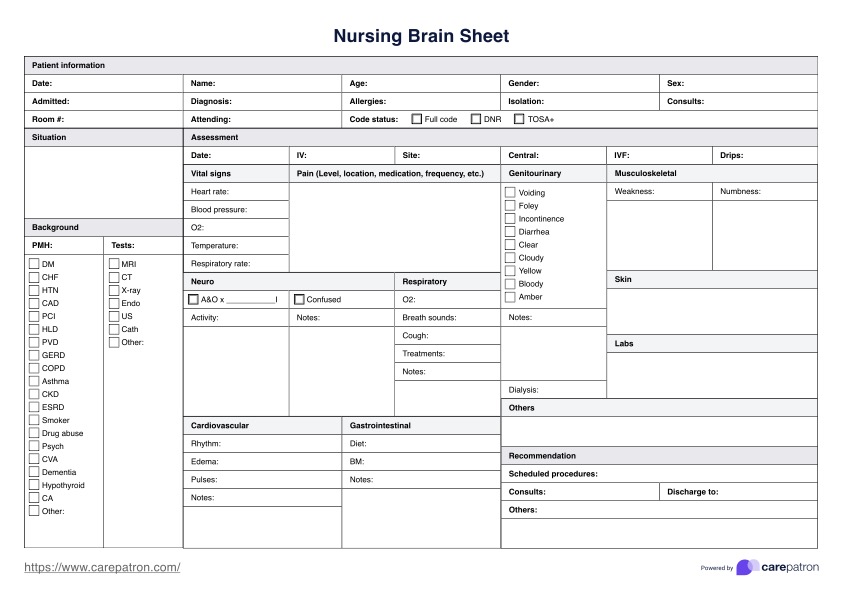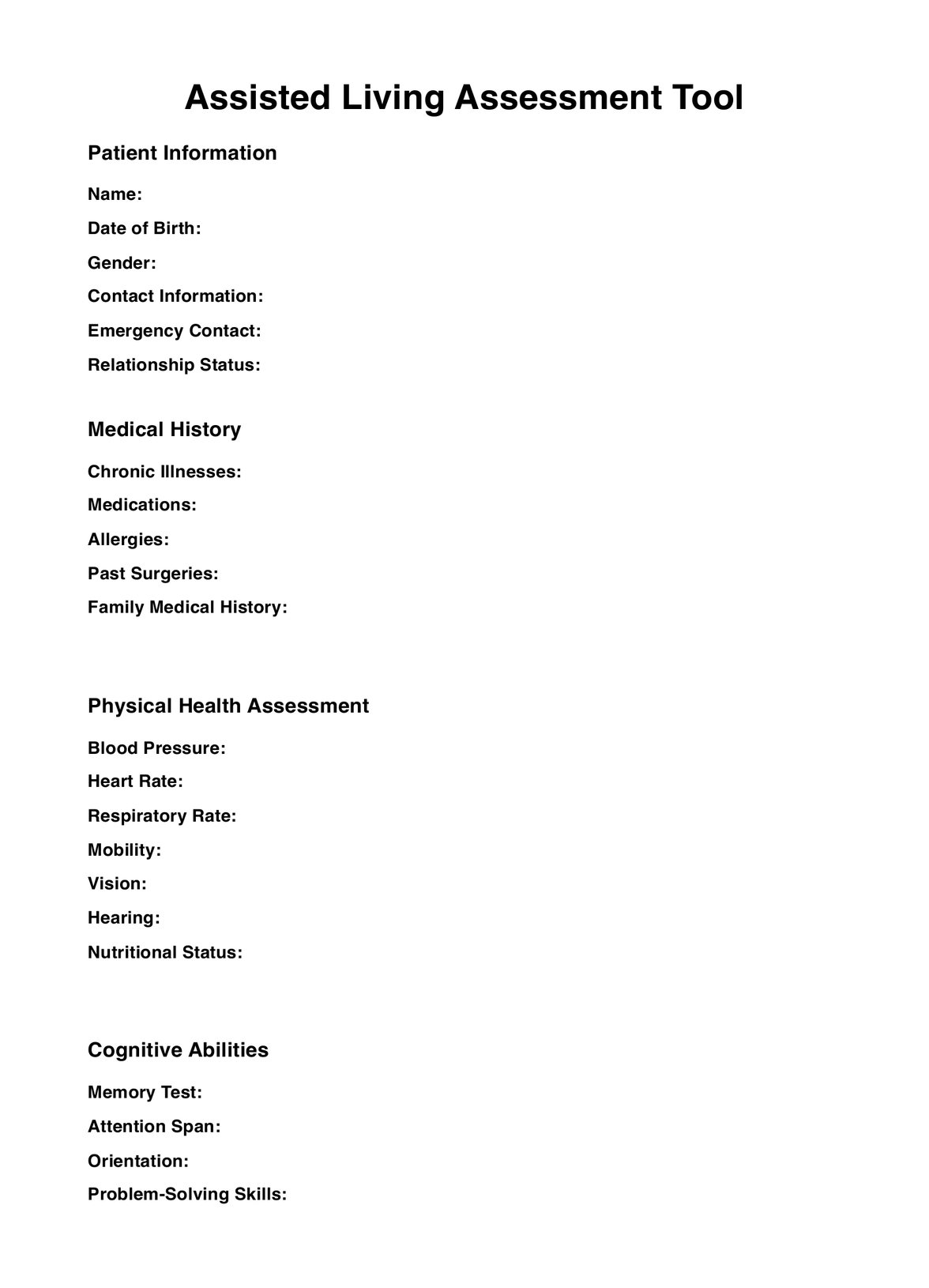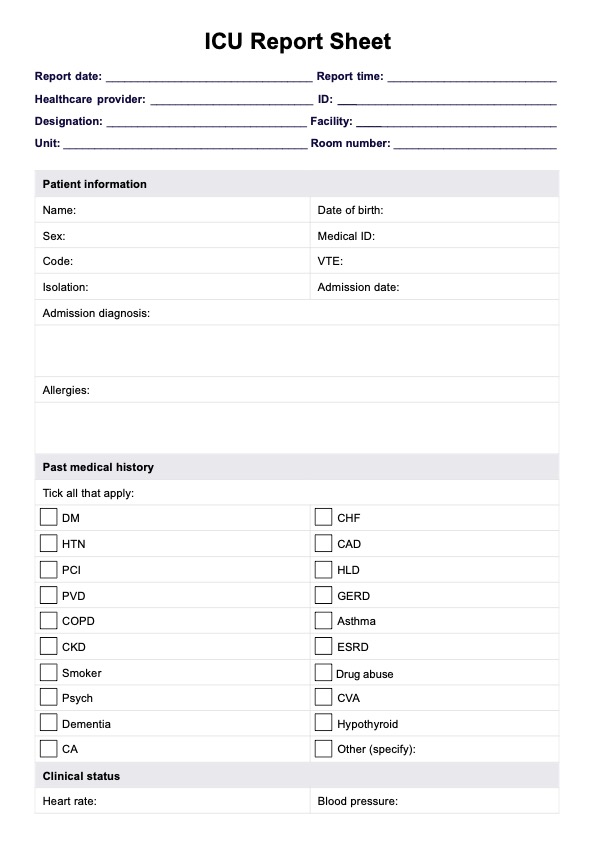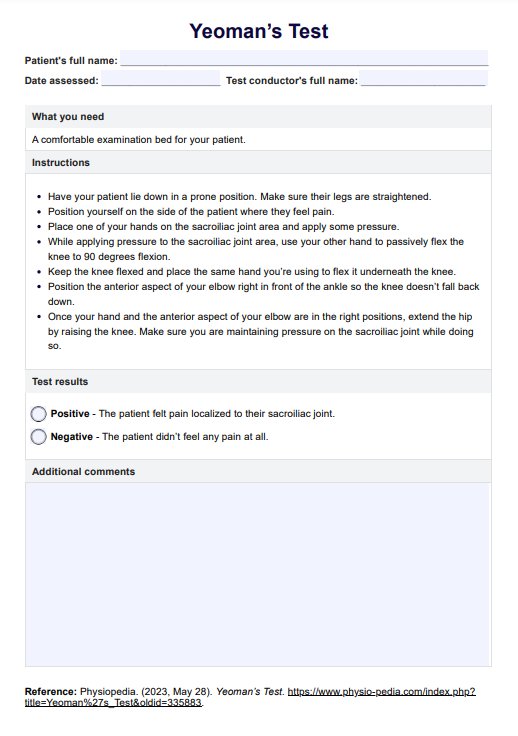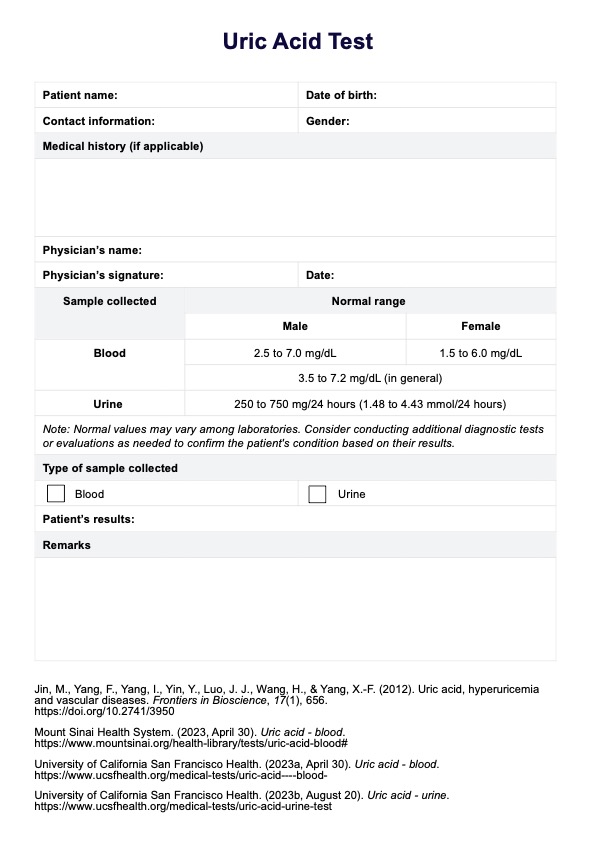FLACC Pain Scale
Learn how to use the FLACC Pain Scale to assess pain in pediatric patients. Use our template for efficient and accurate behavioral pain assessment.


What is the FLACC Pain Scale?
The FLACC Pain Scale is a behavioral pain assessment scale commonly used in assessing acute pain, particularly in patients who are unable to communicate their pain verbally. This includes infants, young children, and individuals with communication difficulties. FLACC stands for Face, Legs, Activity, Cry, and Consolability, each being a category used to observe and score a patient's pain level (Merkel et al., 1997).
Here's a breakdown of the scale:
- Face: Looking for particular expressions such as a constant quivering chin, occasional grimace, or frequent complaints, which can indicate pain.
- Legs: Observing if the legs are relaxed, uneasy, tense, kicking, or drawn up, which can reflect the intensity of the pain.
- Activity: Assessing how the patient is lying or sitting, whether they are quiet, moving, or tense and arched, which can be indicative of discomfort.
- Cry: Listening for no cry, moaning, occasional complaint, or a jerking cry, to gauge the level of pain.
- Consolability: Determining if the patient is content, reassured, or cannot be consoled, which helps understand the severity of the pain.
Each category is scored on a scale from 0 to 2, with a total possible score of 10. A higher score indicates greater pain intensity.
The FLACC Pain Scale is most commonly used by healthcare professionals who work with infants and children, particularly in settings like pediatric intensive care units and postoperative care, and for assessing acute and postoperative pain. Healthcare providers such as nurses, pediatricians, and anesthesiologists find it especially useful for patients unable to verbally communicate their pain. This tool provides objective pain scale measurements and is often compared to other pediatric observational pain scales, like the Wong-Baker Faces or the Neonatal Infant Pain Scale (NIPS). The FLACC scale remains a reliable choice for assessing pain in nonverbal populations due to its focus on observable behaviors.
FLACC Pain Scale Template
FLACC Pain Scale Example
How does this FLACC Pain Scale work?
Our FLACC Pain Scale template includes empty fields for healthcare professionals to record observations and notes about a patient’s pain behaviors. It allows for quick and efficient documentation of pain levels. To use the template, follow these steps:
Step 1: Access the template
Click the “Use template” button to open the template in the Carepatron app, where you can customize and share it. Alternatively, use the “Download” button to access a fillable PDF version for printing or digital use.
Step 2: Assess the patient
For awake patients, observe for at least 2–5 minutes, ensuring the legs and body are uncovered to assess tension and movement. For sleeping patients, observe for at least 5 minutes. If possible, reposition the patient back to a normal position so that you can observe for any signs of tension or discomfort.
Step 3: Record observations
Using the template, score the patient's behaviors in each of the five categories: Face, Legs, Activity, Cry, and Consolability. The scale was developed for differences to be obvious; for example, there are two different items for occasional complaint & crying steadily. Not every particular expression of pain or position, like if the patient has their legs drawn up. Document these and use the numerical scores (0–2) to determine the total FLACC score.
Step 4: Discuss results with the patient
Once the scores are tallied, discuss the results with the patient or the caregiver. Use the insights to tailor procedural pain management plans or recommend further assessments. This step can also help patients or caregivers understand how their behaviors were observed and how the preverbal patient pain scale was used to measure pain levels.
The FLACC scale is a useful tool in acute or procedural pain assessment with patients who cannot communicate verbally. It ensures a thorough, standardized approach to pain evaluation, enhancing the care process.
Benefits of using our FLACC Pain Scale template
Pain assessment tools, including the FLACC scale and other behavioral observation scales, play a crucial role in healthcare, particularly in assessing procedural pain, postoperative pain, and acute pain. They are essential in settings like pediatric intensive care units and for evaluating pain in preverbal patients or critically ill patients. Here's why it's a good idea to use the scale:
- Objective measurement: Tools like the FLACC scale provide an objective method to assess pain, especially important in nonverbal pain indicators or when self-report is not possible.
- Improved pain management: By accurately assessing pain, healthcare providers can better tailor pain management strategies, leading to improved patient outcomes, especially in postoperative care or during painful procedures.
- Enhanced communication: These tools facilitate better communication among healthcare providers about a patient's pain level, improving care coordination in settings like pediatric intensive care units or for critically ill children.
- Standardization: Pediatric pain assessment tools bring standardization to evaluating pain among preverbal patients, which is crucial for comparing pain levels over time and across different patients, enhancing the reliability of assessments.
- Research and clinical studies: They are valuable in research settings for systematically evaluating the efficacy of pain management interventions, ensuring methodological quality and systematic review of pain management techniques.
Reference
Merkel, S. I., Voepel-Lewis, T., Shayevitz, J. R., & Malviya, S. (1997). The FLACC: A behavioral scale for scoring postoperative pain in young children. Pediatric Nursing, 23(3), 293–297. https://pubmed.ncbi.nlm.nih.gov/9220806/
Commonly asked questions
The FLACC score is a behavioral pain assessment tool used in nursing to evaluate pain in patients who cannot communicate verbally. It scores five criteria: Face, Legs, Activity, Cry, and Consolability.
The FLACC Pain Scale is typically used for infants, young children (ages 2 months to 7 years), and individuals with communication challenges. It is one of the pain behavioural observation scales used when patients can't verbally express pain.
For sleeping patients, the FLACC scale can be used to assess pain based on behavioral cues. Other scales like the Critical-Care Pain Observation Tool (CPOT) are also used in intensive care settings.
The FLACC scale has been validated in multiple studies, demonstrating high reliability and validity in assessing pain in children and patients who cannot self-report pain. It is widely regarded as a reliable tool for behavioral pain assessment.


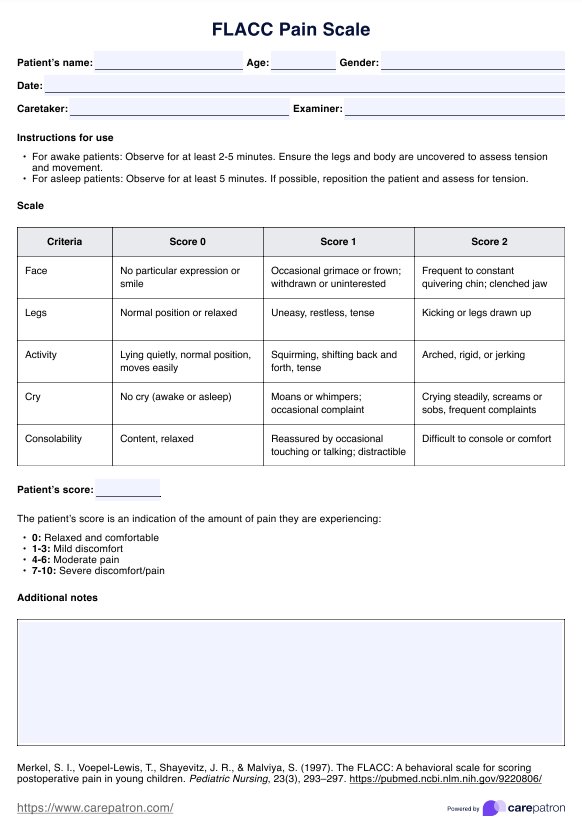
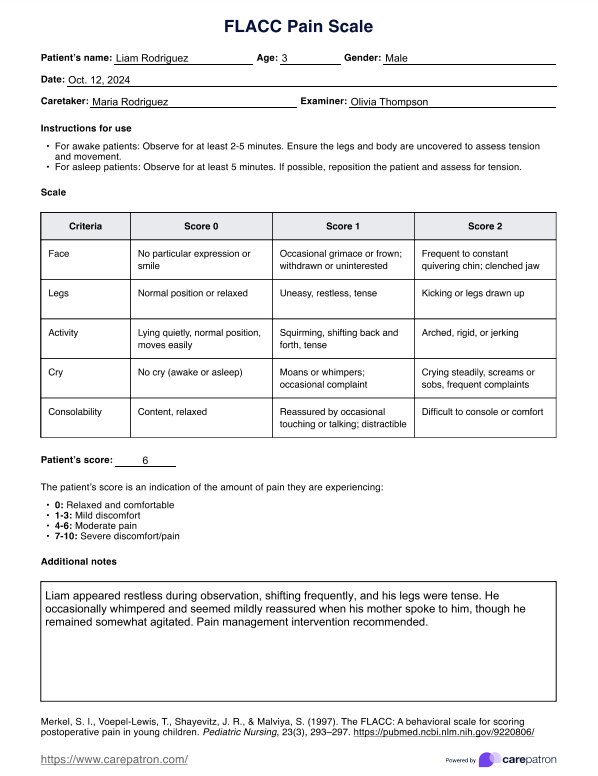





















-template.jpg)














































































